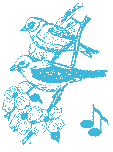

There is more than one kind of beauty on the cover of this issue of our journal. You may be impressed with the beautiful color of the eggs, but there are many other things about the picture that radiate a message we all need to hear. One message is the design of the egg itself. Here is an object which is fragile enough that the chick can peck its way free when its development time is over, yet strong enough that the adult bird can cover it with its body to incubate it. Here is an object that will not allow contaminants to penetrate to the chick and yet allows oxygen in and waste products and carbon dioxide out. The egg is a beautifully designed object which speaks eloquently of the intelligence that must have been involved in its planning.
Another interesting feature of our cover is the nest in which the eggs have been placed. Made of common materials, this structure is placed high above the ground, always adapting to the geometry of the object in which it is placed. Not only must the nest contain the eggs and the baby birds, but it must also withstand wind, rain, the movement of the object it is in, and repeated landing and take-offs of adult birds. Most nests show weaving techniques and lacing arrangements which are of a high sophistication.
As I write this article, perhaps the most important thing that the picture says is that there is hope that the beautiful singing of the birds I hear outside my window will continue in the future. We have a resident cardinal and a resident robin that seem to try to out-do each other. The robin kicks off our day by singing and chirping from the first daylight until I leave for work. The cardinal starts singing in the oak tree at 5:00 or 6:00 P.M. and sings until dark. The things I read say to me that songbirds are having a difficult time surviving in our modern world and that their numbers are dropping drastically. It appears that man is doing things that disrupt the reproductive design of many kinds of songbirds. Perhaps the most beautiful thing about our cover picture is that, if we can manage the creation wisely as God told us to do (Genesis 2:15), we will always have a song for tomorrow that will continue to speak of the beauty and design of the natural world.
John N. Clayton